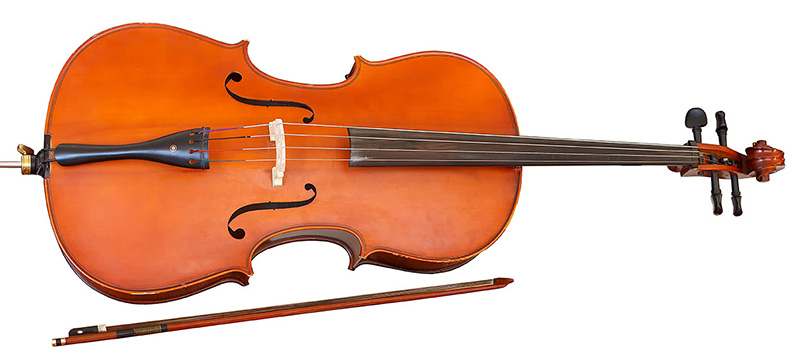
Cello Sheet Music
The History of the Cello
The cello, with its deep, resonant tones and rich emotional range, has captured the hearts of music lovers for centuries. But where did this beloved instrument come from? How did it evolve into the cornerstone of orchestras and chamber music that it is today? Let’s take a journey through the fascinating history of the cello and look at some of our featured cello sheet music.
The Birth of the Cello in the 16th Century
The story of the cello begins in Italy during the 16th century. The cello emerged from the development of the violin family. Early string instruments like the viola da gamba and bass violin laid the groundwork. However, these predecessors were large and cumbersome. The need for a more practical bass instrument in ensembles led to the creation of the first cellos.
Crafted by master luthiers such as Andrea Amati, these early cellos were larger and tuned a whole tone lower than the modern version. As time went on, innovative luthiers like Antonio Stradivari refined the design. They made the cello smaller and more manageable, with an improved tonal quality. By the late 1600s, the cello had found its familiar tuning of C-G-D-A. This set the stage for its rise in popularity.
Pachelbels Canon in D is a favourite all round and especially well known at weddings.
The Baroque Period: The Cello Finds Its Voice
During the Baroque period, the cello began to come into its own, not just as a member of the ensemble but as a solo instrument. One of the pivotal moments in cello history came when Johann Sebastian Bach composed his Six Suites for Unaccompanied Cello. These works are now considered some of the most important in the cello repertoire. They showcased the instrument’s unique ability to convey both melody and harmony, elevating it to new heights.
At the same time, the cello played a crucial role in the basso continuo. It provided the harmonic foundation in many Baroque compositions. Its growing presence in both solo and ensemble settings set the stage for the cello’s expanded role in the centuries to come.
Classical and Romantic Eras: The Cello Comes of Age
The 18th century saw the cello firmly establish itself as a key instrument in the Classical era. Composers like Haydn, Boccherini, and Beethoven began writing significant works for the cello. These included concertos and sonatas that highlighted the instrument’s versatility. The cello’s role in the orchestra also grew, as it became an essential part of the string section. It added depth and warmth to the ensemble’s sound.
As music transitioned into the Romantic period, the cello’s expressive capabilities were further explored. Composers like Schumann, Brahms, and Dvořák wrote passionate, emotive works that took full advantage of the cello’s ability to convey deep emotion. The cello was now recognized not just for its supporting role but as a powerful solo instrument capable of standing on its own.
Dvořák’s Song to the Moon from Rusalka is a lovely piece of cello sheet music to download and play.
The 20th Century and Beyond: A Modern Mastery
The 20th century brought a new wave of innovation and exploration for the cello. Composers like Elgar, Shostakovich, and Prokofiev expanded the instrument’s repertoire with groundbreaking compositions. These works challenged cellists to push the boundaries of technique and expression. The cello also gained a new level of prominence thanks to virtuosos like Pablo Casals and Jacqueline du Pré. These musicians brought the instrument to the forefront of the classical music world with their passionate performances.
Elgar’s Chanson de Matin is another bright and fresh piece to play.
Today, the cello continues to be a versatile and beloved instrument, found not only in classical music but in genres as diverse as jazz, pop, and even rock. Modern cellists are exploring new techniques and styles, ensuring that the cello remains a vital and evolving part of the musical landscape.
The Timeless Appeal of the Cello
From its origins in the 16th century to its role as a modern-day musical powerhouse, the cello’s journey is a testament to its enduring appeal. Whether in the hands of a solo virtuoso or nestled within the warmth of an orchestra, the cello’s rich, resonant voice continues to captivate audiences and inspire musicians around the world. As the cello’s history continues to unfold, one thing remains clear: this instrument’s deep connection to human emotion and expression will keep it at the heart of music for generations to come.
Explore our cello sheet music section and find a piece to try today.